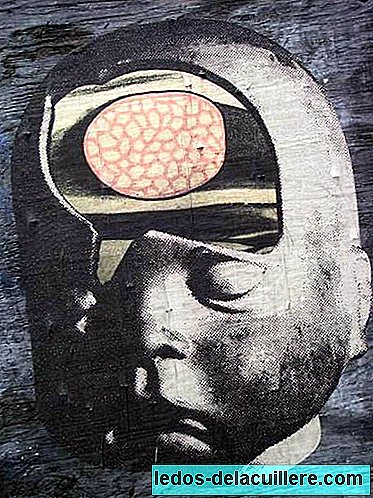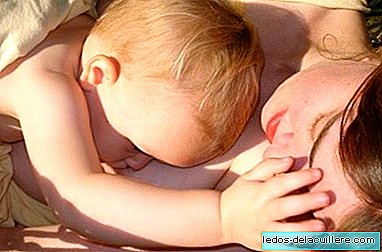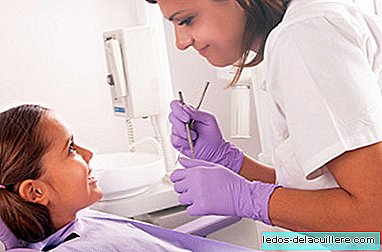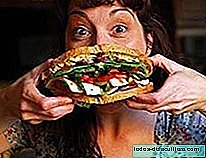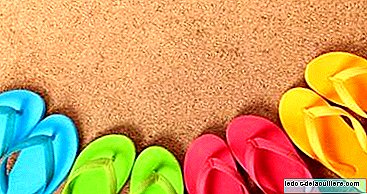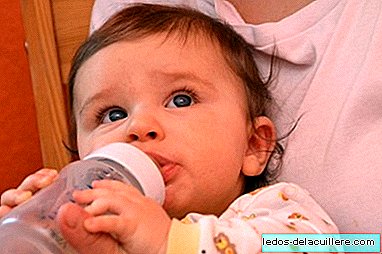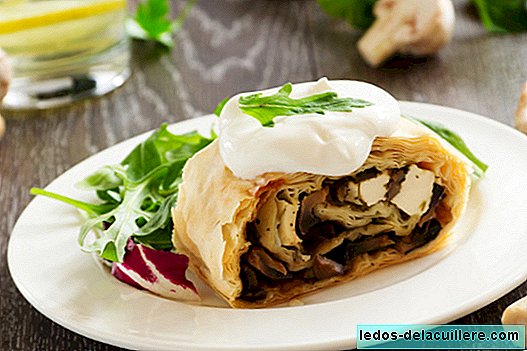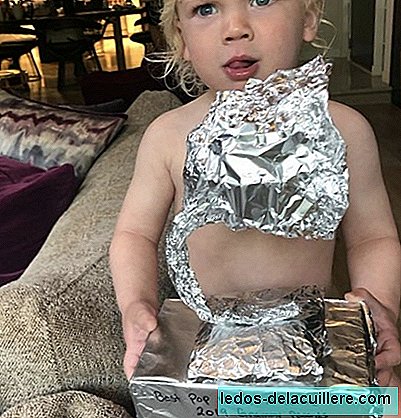It will be for their smooth skin, it will be because they do not notice their presence or can avoid them, for whatever reason, Babies are one of the favorite prey of mosquitoes and it is normal for us to worry how to protect them from the bites of these undesirable insects. And more in summer, since the combination of humidity and heat favors the proliferation of mosquitoes in this season. What is more effective? What products can I use and which not?
Mosquito bites are the most frequent bites in summer and we are all exposed to them, suffering them more than we would like. But as for ourselves, for adults, we have more or less clear protection systems, in the case of mosquito repellents for babies are not all suitable.
First, we must point out that insect repellents prevent bites from biting insects (mosquitoes, ticks, fleas and flies) but not from stinging insects (bees, hornets and wasps). Then, repellents are suitable for mosquitoes, but if we go to any establishment we will see a whole range of possible repellents for sale.
And is that insect repellents are marketed in many different forms: aerosols, atomizers, liquids, creams and bars ... In addition, some repellents are made of chemicals, others contain natural ingredients ... Given this diversity, What mosquito can I use for the baby? From what age?
Types of insect repellents for children

Repellents are substances that, applied to the skin and / or clothing or other tissues (tents ...), interfere with the chemical receptors of the insects preventing them from fixing the exact location of the skin where they are going to bite. Let's say that the mosquito no longer correctly detects "the smell" of humans or knows where it is where they have to perch to bite. These products only act when the mosquito is a short distance from its target.
We can differentiate the following types of insect repellents, for mosquitoes, flies, fleas and ticks, according to their main component or active ingredient:
Chemical repellents with DEET. N, N-Diethyl-meta-toluamide, known as DEET, is the most common ingredient in insect repellents. They are available in lotions, creams and sprays. However, precautions must be taken when applied to children. It is considered the best defense against biting insects. It is applied to the skin or clothing. Its protection covers two to five hours, depending on the concentration of the DEET ingredient in the product (two hours 10% concentration, five hours 24%; a concentration greater than 30% does not offer greater efficacy or protection). The AAP recommends that repellents used in children should not contain more than 30% DEET. Nor are these insect repellents recommended for children under two months of age. Likewise, the Spanish Association of Pediatrics indicates that DEET will be avoided as much as possible in children under two years old, prioritizing the use of mosquito nets and other non-chemical methods. Yes it can be applied in car seats and strollers. Some brands: Relec, Goibi, Aután ...
Icaridine or picaridine. KBR 3023 (hydroxyethyl isobutyl piperidine carboxylate). This compound has been proven as effective as DEET and without the irritation associated with the latter. The protection covers from three to eight hours, depending on its concentration. It is considered a safe product if the recommendations for use are followed. It is not recommended for babies under two months. According to the Spanish Association of Pediatrics, since it has not been evaluated in children under six months, icaridine is also not recommended by some organizations for children under that age. Some brands: Aután.
Repellents with plant essential oils (citronella, cedar, eucalyptus, soy). The Centers for Disease Control and Prevention has pointed out that these oils are as effective as DEET or icaridine in repellents containing 2% eucalyptus, lemon or soybean oils. Of course, the protection time is less than two hours: they have to be replaced very frequently. Uncommon allergic reactions. Not recommended for babies under two months. He citriodiol or eucalyptus citriodora It is not recommended in children under two years (it can cause eye irritation, contains alcohol ...). For babies from two months to a year and with a low risk of bite, citronella is usually recommended, taking into account that it must be replaced often as indicated in the instructions for use if necessary, because its time of action is less high in other products (also combined with other more effective repellents). Some brands and repellents with essential oils: Chicco, Mustela, Mosiguard, Repel, Arkorespira, Relec.
Chemical repellents with permethrin. Permethrin or pyrethrin is a synthetic chemical that is used worldwide as an insecticide and acaricide, as well as insect repellent, mosquitoes, lice ... They should not be applied to the skin, only on clothing (and the product remains even after washing). Unlike icaridine and plant oils, efficacy has been demonstrated to kill ticks on contact. It is not recommended for children under two months of age. Some brands: Alvitia, Goibi, Halley.
IR3535 (ethyl 3-N-butyl-n-acetyl aminopropionate), a synthetic insect repellent active against mosquitoes, ticks and biting flies. Studies have shown a very variable protection according to the concentration of the product and the species of mosquito against which it acts (from one to six hours). Against the common mosquito, its effectiveness is about six hours. The toxicity of this repellent is minimal, although it is an eye irritant and should not be used in children under one year. After twelve months the product with a concentration of less than 20% can be applied to children. Some brands: Acofar, Alvita, Aután, Bloom, Cusitrín infantil, Goibi infantil, ISDIN, Mitodermo, Relec, Repel.
In the United States, the American Academy of Pediatrics (AAP), following instructions from the Centers for Disease Control and Prevention, recommends using repellents based on Icaridine, DEET, or lemon eucalyptus oil.
The Spanish Academy of Pediatrics indicates that in places with a high concentration of insects, clothes can be sprayed with insecticides that carry permethrin, in addition to using repellents in uncovered areas.
After two years the previous repellents can be applied (following the specific instructions for use). The WHO recommends those repellents with DEET with "family" concentrations not exceeding 20%.
And common sense also has to mark our performance with repellents. Have you not seen mosquitoes or suffered any bites in your city or vacation spot? Is there no special risk? Why smear the baby or child with products? Another thing is if we go to the tropics, or if we go on an excursion or if we have already seen mosquitoes around. But many times barrier protective measures may be sufficient.
In summary: no product is recommended to repel mosquitoes in babies under two months of age. Depending on the type of repellent, they can be used after two or six months, one year or two years, but in appropriate concentrations (family or child format) and always following indications of use.Repellents vs insecticides
On the other hand, there are different types of insecticides, intended to kill insects and not to interfere with the behavior of insects, to repel them, move them away or avoid them like repellents.
Most insecticides use pyrethroids as an active ingredient, synthetic compounds that mimic natural pyrethrins and act on the nervous system of insects causing their death.
It is not recommended to use insecticide spray or spray in closed rooms with or near children. Diffuser insecticides are continuously spreading insecticide and have no short-term toxicity. The diffusers with liquid have been found somewhat more effective with respect to the tablets. Of course, better in open rooms if a baby sleeps in it.
Insect repellents not effective

The American Academy of Pediatrics points out the following as ineffective repellents:
Bracelets containing chemical repellents such as DEET or natural essences such as citronella, geraniol, lavender. These mosquito bracelets can also contain mixtures of both. In any case, its real effectiveness against mosquitoes is very low, since repellents must be applied over the entire surface of the skin to be effective. According to scientific evidence, repellents do not work more than four centimeters from the point at which they are applied. In this same section and for the same reasons we could place mosquito patches.
Garlic or vitamin B1 taken by mouth.
Ultrasonic devices that emit sound waves designed to ward off insects. Ultrasonic anti-mosquito devices have been subject to investigation on several occasions and there have been no conclusions demonstrating their positive effects.
Houses for birds or bats.
Garden devices that "electrocute" insects (in fact, they can attract insects to the garden).
According to the OCU, light-based devices to attract mosquitoes are also ineffective. Ultraviolet light attracts flies and moths, but not mosquitoes. Yellow light bulbs have an effect on some flying insects, but not on mosquitoes.
Recommendations for the safe use of repellents

Carefully read and follow the instructions for use, the leaflet or technical sheet of the repellent product.
Never apply insect repellent to children under two months.
Apply insect repellent only on the outside of your child's clothing and on the skin that is exposed.
Products containing permethrin should not be applied to the skin.
Do not inhale repellents (if they are sprayed or sprayed, they should be used outdoors). Do not direct them to the face: apply them on the hands and then spread it over the face.
Avoid eyes and mucous membranes, such as children's mouths and use it sparingly around the ears.
Do not put in the hands of babies, as they are often taken to the mouth.
Use the right amount of repellent to cover your child's clothes and the skin that is exposed. A greater amount of repellent does not lead to greater effectiveness. Do not put repellent under the child's clothing.
Avoid reapplying the repellent unless necessary.
It is important to help young children apply insect repellent, never let them do it alone and supervise older children when using these products.
Wash the child's skin with soap and water to remove the repellent that he has left when he returns to the interior of the house, and wash his clothes before he uses it again.
It is not recommended that sunscreen and repellent be in the same product, since repellents, in general, do not need to be applied as often as protectors. Then, an excess of repellent components would be applied to the child. In addition, DEET can make the sun protection factor (SPF) less effective.
Yes you can use a sunscreen and an insect repellent at the same time, in separate products, following the application instructions of each product. In general, you should first use the sunscreen and then the repellent, since the sunscreen may have substances that attract certain insects.
Do not spray insect repellent on cuts, wounds or on irritated skin.
Apply a little product on a small area of the skin to see if it does not produce a reaction. If there are suspicions that the child is having a reaction, such as a rash, to an insect repellent, the product should be suspended and your child's skin washed with soap and water. Call emergencies if necessary, go to the doctor or go to the medical center with the repellent container.
Do not use colonies that give off sweet smells or soaps with perfumes or hair sprays, as they could attract insects.
If you travel to places of risk, a tropical country or an area with many mosquitoes, the repellent is essential and consult the official recommendations in this regard (you must take into account the areas of transmission of insect diseases). It is not the same to go to Benidorm than to the Amazon jungle.
Other mosquito measures

We can take others precautions to protect children from mosquito bites:
Wear appropriate clothing that covers the baby (cotton, light colors ...), long sleeve, long pants. Attention to the feet: you can wear thin socks.
Use mosquito nets in the windows of the house at bedtime, small crib mosquito nets or in the stroller (protective nets) for sleeping or walking.
As we have noted above, electric mosquitoes They are effective to use at home, at night and with the room doors open. Attention to unplug these devices, as they get hot and the baby could reach them crawling.
Air conditioning usually prevents mosquitoes from approaching, as well as fan air, but they are not fully effective measures.
Maintaining proper body hygiene will help not attract mosquitoes even more because sweating and strong odors can seduce them.
Avoid leaving areas or containers with standing water (or that can be filled with water) at home, in the garden ...
Keep the pool covered in winter and conveniently chlorinated.
Keep fountains or ponds clean. If there are fish, in addition, mosquito larvae will not proliferate.
Photos | iStock
More information | CedimCat
In Babies and more | Insect bites and other animals more frequent in summer: how to avoid and treat them, Insect bites in babies and children, what to do and how to prevent them?


